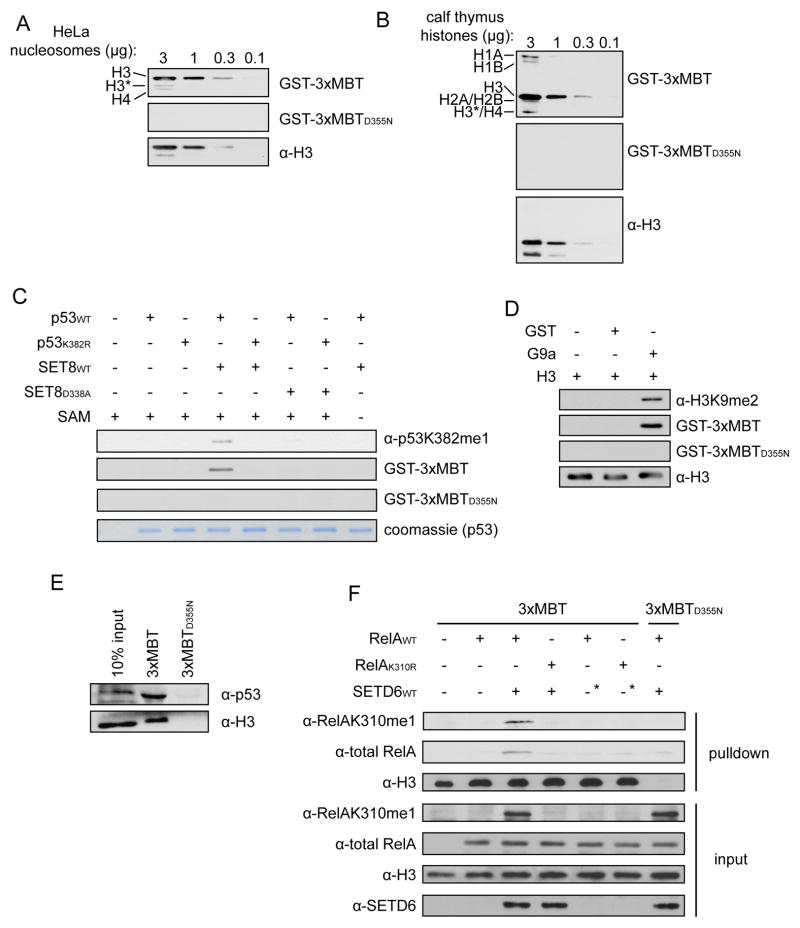Figure 3.
3xMBT detects multiple methylated proteins in common affinity-based assays. (A and B) 3xMBT, but not 3xMBTD355N, recognizes endogenous histones in Far Western assays. Far Western analysis of (A) purified HeLa nucleosomes and (B) purified calf thymus histones serially diluted to the indicated quantities and probed with GST-3xMBT and GST-3xMBTD355N. Binding of GST fusion proteins was detected with α-GST antibody. *H3 indicates an H3 degradation product that migrates near H4. H3 blots are shown as a loading control. (C) 3xMBT, but not 3xMBTD355N, specifically detects monomethylated p53 by Far Western. In vitro methylation reactions with wild-type SET8 or catalytically inactive SET8D338A on recombinant wild-type p53 or p53 carrying K382R substitution (p53K382R) were probed with α–p53K382me1 antibody as previously described (Shi et al., 2007) or the indicated GST fusion as in (A). Co-factor SAM was included in the reactions as indicated. Coomassie stain of p53 is shown below as a loading control. (D) 3xMBT, but not 3xMBTD355N, specifically detects recombinant H3 dimethylated at lysine 9 (H3K9me2). In vitro methylation reactions of recombinant H3 with recombinant G9a SET domain, detected as described in (C). Total H3 is shown as a loading control. (E) 3xMBT, but not 3xMBTD355N, precipitates known methylated proteins H3 and p53 from HeLa nuclear extract (NE). Western blot of GST-3xMBT and GST-3xMBTD355N NE pull-downs probed with the indicated antibodies. (F) 3xMBT, but not 3xMBTD355N, precipitates methylated RelA from cells. Pull-down assays of NE from 293T cells co-expressing SETD6 (or two different negative control constructs, the second of which is indicated by the asterisks) and wild-type RelA or RelA carrying K310R substitution (RelAK310R) and probed with the indicated antibodies. α-RelAK310me1 antibody was previously described (Levy et al., 2011a). See also Figure S3.

